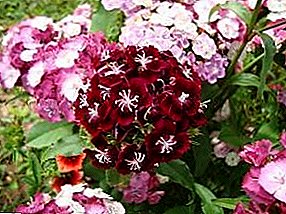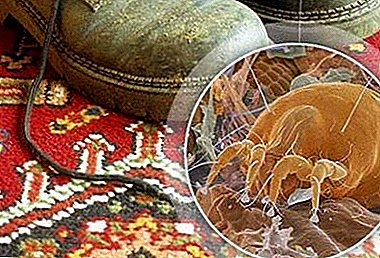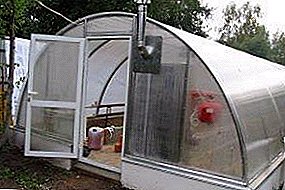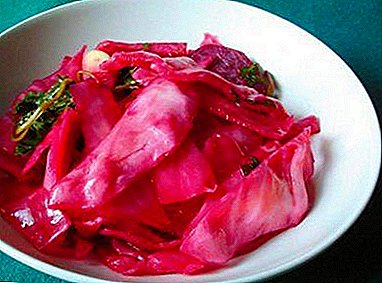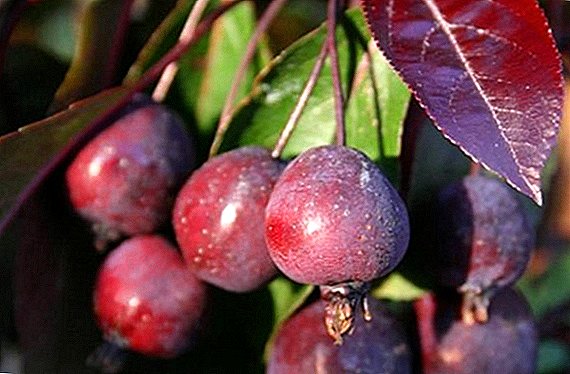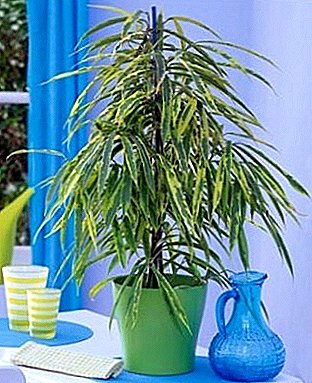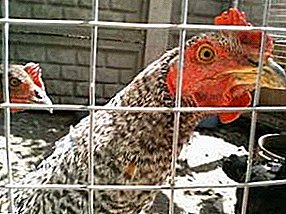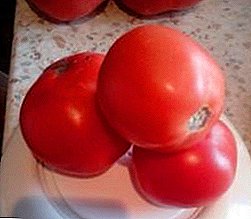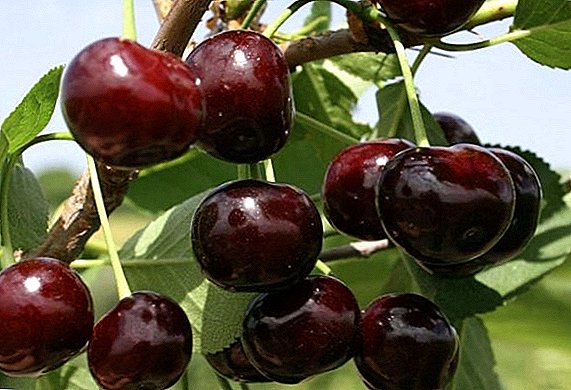 The number of varieties of fruit trees is constantly increasing, and the cherry is no exception. This fact pleases gardeners, but at the same time makes the choice a little bit difficult, because you want the tree to look prettier and produce a good harvest. Consider one of these lines, namely: Putinka cherry, focusing on its characteristics.
The number of varieties of fruit trees is constantly increasing, and the cherry is no exception. This fact pleases gardeners, but at the same time makes the choice a little bit difficult, because you want the tree to look prettier and produce a good harvest. Consider one of these lines, namely: Putinka cherry, focusing on its characteristics.
Biological description
This variety is considered young - it was zoned in 2013. In fact, it is a hybrid of the lines "Excellent Venyaminova" and "Anthracite". This selection gave good results, which you now see.
Tree
This cherry is distinguished by the following features:
- height up to 3 m and average growth rates;
- crown average density. She looks wilted and "weeping";
- bare brown-brown shoots of small size. Their arched shape catches the eye;
- light green leaves with a matte shade and noticeable wrinkles. Form - obovate, with a smooth taper on the tips;
- flat sheet plates that are folded down. "Down" is absent;
- umbrella buds with white and pink flowers of medium size.
Important! When planting such seedlings, a square hole is dug out with sides of 60 cm. Superphosphate (1 kg), hydrated lime (1 cup) and 2 buckets of rotted humus are laid in layers at the bottom. But fresh manure and ash are contraindicated.
 Note that the variety is attributed to the number of partially self-fruited (that is, it is suitable for a home plot where pollinator varieties grow). Without their participation, only a quarter of the possible number of flowers will be tied.
Note that the variety is attributed to the number of partially self-fruited (that is, it is suitable for a home plot where pollinator varieties grow). Without their participation, only a quarter of the possible number of flowers will be tied.Check out the largest varieties of cherries.
Fruit
“Putinka” is large-fruited, and the berries themselves are one-dimensional. The average weight is 5.5-5.6 g, but often ripen to 7 g.
In appearance, they are widely rounded, and in color they are dark red (the tone is close to rich maroon). Smooth skin is medium hard.
The dark red flesh is very juicy. The sweet and sour taste typical for cherries is distinguished by its subtle notes (the "sourness" is felt somewhat weaker than that of other varieties). Medium diameter round bone with a smooth surface separates well from the pulp. Another feature of the fruit - a small number of subcutaneous points, which are almost invisible.
As for the composition, the berries contain about 10-10.5% of sugars and 1% of amino acids. In total with other dry substances (ashes, dietary fibers and vitamins) their share reaches 17% of the total mass. 
Varietal features
By virtue of their "youth", this line causes an increased interest among practical gardeners. One of the main questions is how a tree endures winter.
Winter hardiness and disease resistance
Universal variety is considered relatively winter hardy. It is best suited for wintering in temperate regions.
Did you know? The fruits of one of the most famous types of cherries - Japanese sakura - are actually inedible.In areas with a more severe climate, only the hardiness of the tree remains the same - in flower buds it becomes medium (they are sensitive to abrupt changes in weather and temperatures).
The clear advantage is resistance to diseases and pests. Branches can be threatened with fungal diseases such as moniliosis and coccomycosis (fortunately, this is rare).  Cherry is prone to moniliosis. With pests, the situation is approximately the same: aphids, weevils or sawflies appear unless in the case of mass infection of neighboring trees.
Cherry is prone to moniliosis. With pests, the situation is approximately the same: aphids, weevils or sawflies appear unless in the case of mass infection of neighboring trees.
Choosing a cherry variety for planting at the site, we advise you to familiarize yourself with the peculiarities of growing such varieties: Vladimirskaya, Molodezhnaya, Ashinskaya, Black Large, Precious Carmine, Lyubskaya, Morozovka, Ural Ruby , "Shpanka", "Turgenevka".
Ripening and yield
Mass fructification begins in the fourth year after planting.
Waiting is rewarded in full: on average, 8 tons are removed from 1 ha of arrays, and all 12 tons of fruits are removed on good soils.
Purpose
Harvested berries are used for the following purposes:
- as a blank for drying;
- for preservation (juices, jams, preserves);
- as a filling for dumplings and pastries - casseroles and pies, pies and cakes, etc .;
- during the preparation of liqueurs, wine, tinctures and other alcoholic beverages using home technology;
- but that's not all - dark cherries are great for making marshmallows, some are dried in the oven or added to meat (so the roast gets just a chic aroma).
Learn about how to make cherries for the winter: how to dry and freeze cherries, how to make cherry compote, when to collect and how to dry cherry leaves for tea.
 We found out what the “Putinka” cherry stands out for, and by what signs can such trees be recognized. We hope these data will be noted by our readers and will help to make a choice in favor of this variety of cherries.
We found out what the “Putinka” cherry stands out for, and by what signs can such trees be recognized. We hope these data will be noted by our readers and will help to make a choice in favor of this variety of cherries.


